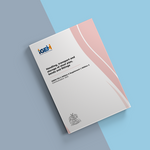IGEM/TD/1 Edition 5 Supplement 1 - Handling, transport and storage of steel pipe

This supplement covers the handling, transport and storage of steel pipe and highlights precautions to control steel pipe products being delivered, off-loaded and stored safely at customers’ sites.
The updated version includes:
-
Updates relating to handling, lifting and storage (including stacking) of pipe and components
-
Text was added to cover consideration of human factors
-
Specific guidance on minimum requirements for short term storage was included
-
Additional requirements for long term storage were included specifically, protection and physical checks on withdrawal from storage
-
A new section was added: Section 3 - Safety
-
There was a general update and revision of figures
-
The terminology used in the Standard was streamlined
-
Legislation, Appendix 1 and Appendix 2 (references) were all updated.
Introduction
1.1 This Standard is issued as a Supplement to IGEM/TD/1 Edition 5, and supersedes IGE/TD/1 Edition 4 Supplement 1 which is obsolete.
This Supplement 1 can be read and used independently of IGEM/TD/1. The advice contained herein may be used for the handling, transport and storage of steel components to be used in any fuel gas installation, such as those designed and installed in accordance with IGE/TD/3, IGE/TD/4, IGE/TD/13, IGEM/UP/2, IGE/UP/3, IGE/UP/6, IGE/UP/7, IGE/UP/8, IGE/UP/9, IGE/UP/10, IGE/UP/11, IGE/UP/12, IGE/GM/4, IGE/GM/6 and IGE/GM/8 (see the list of all Standards available at www.igem.org.uk).
1.2 This Standard has been drafted by a Panel appointed by the IGEM’s Gas Transmission and Distribution Committee, subsequently approved by that Committee and published by the authority of the Council of IGEM.
1.3 It is now widely accepted that the majority of accidents in industry generally are in some measure attributable to human as well as technical factors in the sense that actions by people initiated or contributed to the accidents, or people might have acted better to avert them.
It is therefore necessary to give proper consideration to the management of these human factors and the control of risk. To assist in this, it is recommended that due cognisance should be taken of the publication HS(G)48.
1.4 The primary responsibility for compliance with legal duties rests with the employer. The fact that certain employees, for example “responsible engineers”, are allowed to exercise their professional judgement does not allow employers to abrogate their primary responsibilities. Employers must:
(a) Have done everything to ensure, so far as is reasonably practicable, that there are no better protective measures that can be taken other than relying on the exercise of professional judgement by “responsible engineers”.
(b) Have done everything to ensure, so far as is reasonably practicable, that “responsible engineers” have the skills, training, experience and personal qualities necessary for the proper exercise of professional judgement.
(c) Have systems and procedures in place to ensure that the exercise of professional judgement by “responsible engineers” is subject to appropriate monitoring and review.
(d) Not require “responsible engineers” to undertake tasks which would necessitate the exercise of professional judgement that is beyond their competence. There should be written procedures defining the extent to which “responsible engineers” can exercise their judgement. When “responsible engineers” are asked to undertake tasks that deviate from this, they should refer the matter for higher review.
1.5 This Standard does not attempt to make the use of any method or specification obligatory against the judgement of the responsible engineer. Where new and better techniques are developed and proved, they should be adopted without waiting for modification to this Standard. Amendments to this Standard will be issued when necessary and their publication will be announced in the Journal of IGEM and other publications as appropriate.
1.6 Requests for interpretation of this Standard in relation to matters within its scope, but not precisely covered by the current text, should be addressed to Technical Services, IGEM, Charnwood Wing, Holywell Park, Ashby Road, Loughborough, Leicestershire, LE11 3GH, email: [email protected] and will be submitted to the relevant Committee for consideration and advice, but in the context that the final responsibility is that of the engineer concerned. If any advice is given by or on behalf of IGEM, this does not relieve the responsible engineer of any of his or her obligations.
Scope
2.1 This Standard covers the handling, transport and storage, whether in depot or on site, of coated and uncoated steel pipes, bends and fittings.
2.2 Primarily, this Standard deals with the handling, transport and storage of single lengths of pipe.
2.3 Owing to the wide range of components and assemblies available, the requirements are of a general nature to provide the minimum requirements for short term storage and the additional measures to be taken when components and assemblies are held for extended periods of time.
The specific application will, therefore, need to take account of the particular circumstances involved and the components and assemblies that are being handled, transported or stored.
